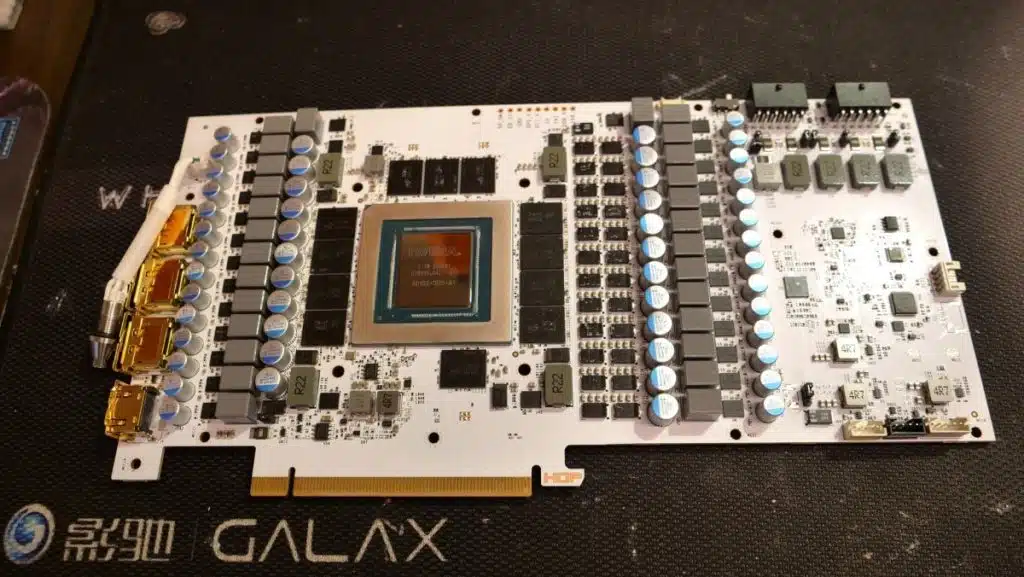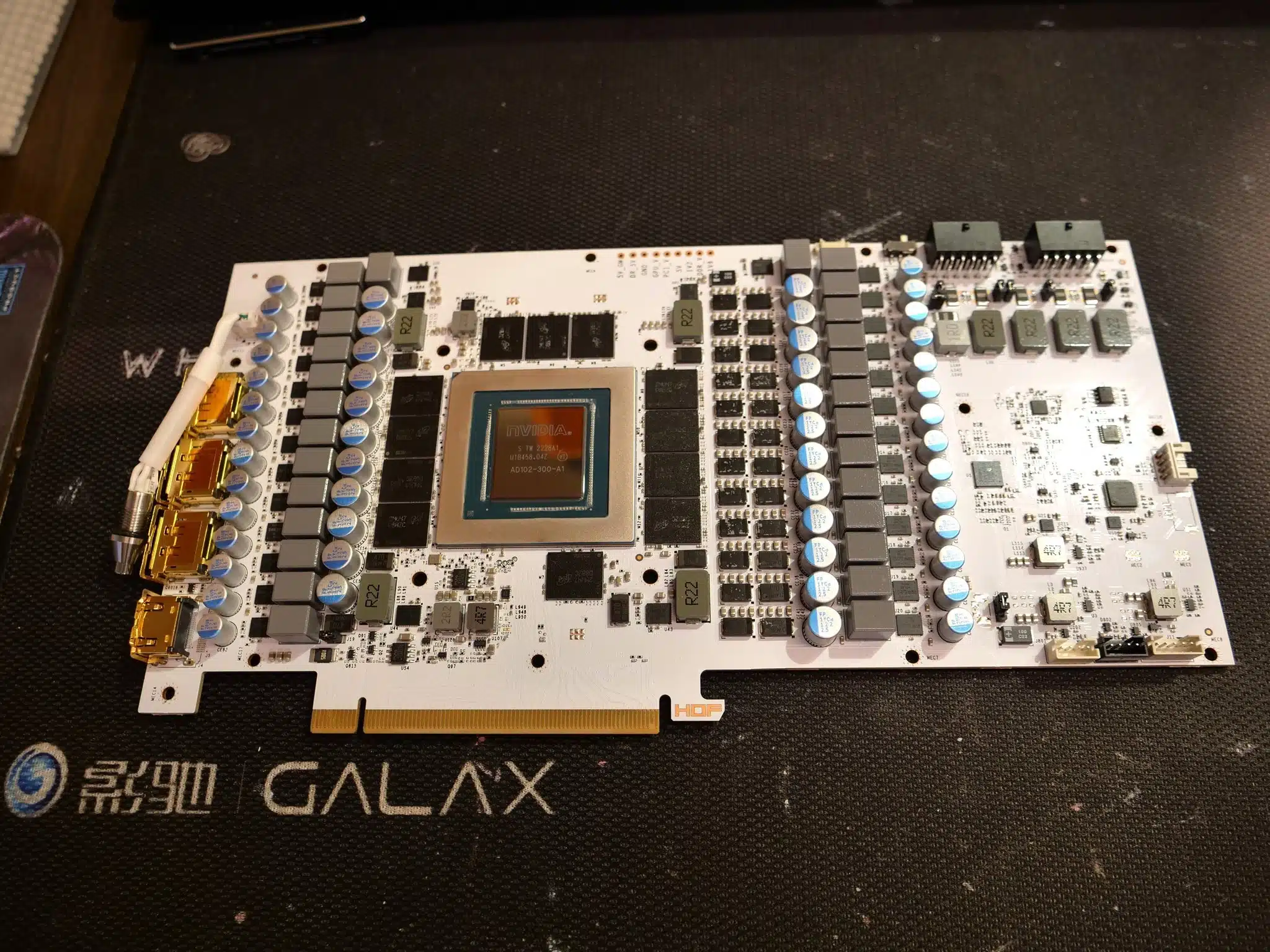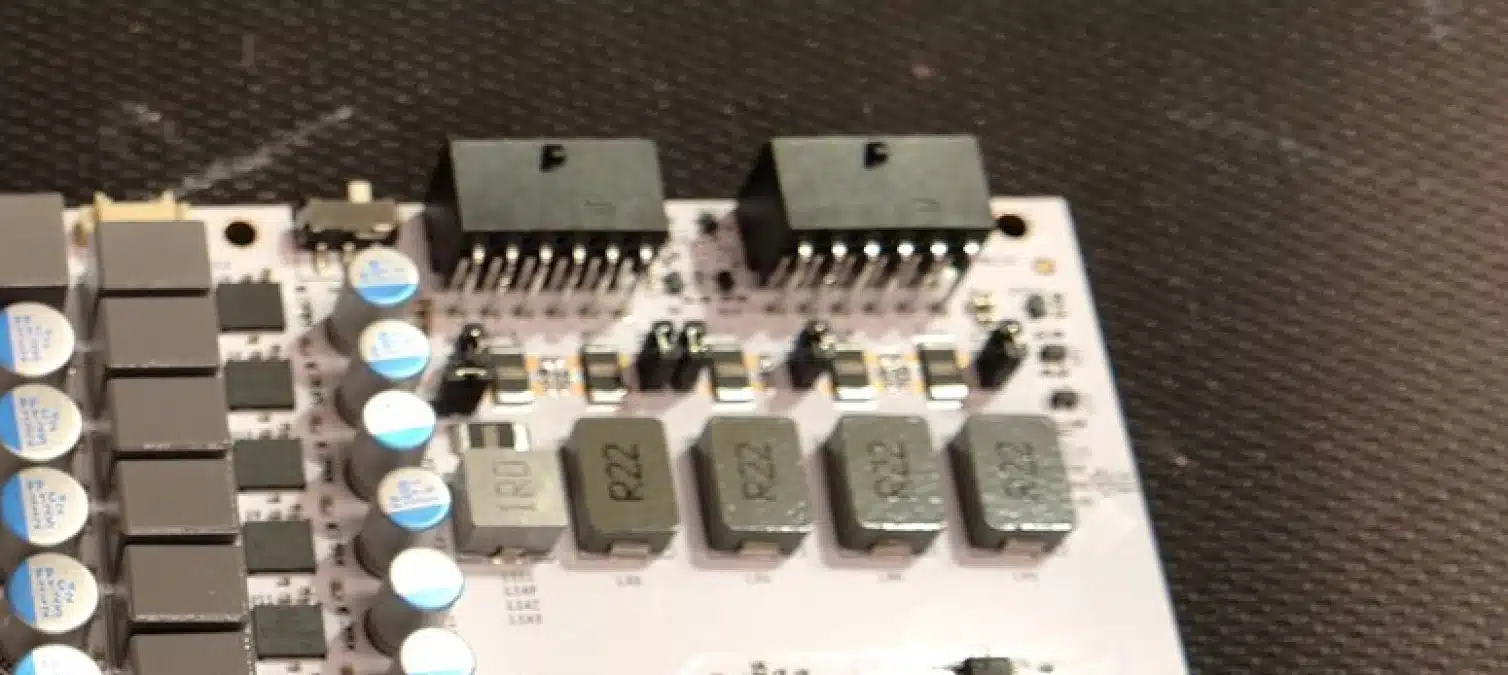
After months of rumors, the GALAX RTX 4090 HOF PCB has been spotted confirming that it does indeed feature 2x 16-pin 12VHPWR connectors. GALAX is well known for making graphics cards that set world records and it looks like this next Hall of Fame edition will be no exception. The previous GALAX RTX 3090 HOF was used to set 16 world records in 2021.
4090 HOF pic.twitter.com/pFMUQIvntv
— bl4ckdot 🇫🇷 (@bl4ckdot) November 1, 2022
The sleek-looking PCB utilizes GALAX’s usual white theme and what appears to be gold display connectors as well. While a single 16-pin 12VHPWR connector can provide up to 600 Watts of power it is doubtful the dual connector design is intended to deliver a full 1200 Watts. More than likely the extra connector is for improved power delivery during extreme overclocking. A 28+4 phase VRM design, another first for the Ada GeForce RTX 4090 cards, can also be seen. GALAX has not yet officially revealed the new card although it could do so soon. The pictures do indicate that it does use the AD102-300 GPU featuring 16384 CUDA cores paired with 24GB of GDDR6X memory.



VideoCardz notes that GALAX often sends these PCBs out to overclockers for testing as it continues to develop the cooler for it. In terms of coolers, GALAX began using a 4-fan design with its Ampere-based graphics cards and has continued to do so with its GALAX GeForce RTX 4090 Serious Gaming 1-Click OC graphics card. It is not known if the GALAX RTX 4090 HOF will feature a similar design or if the company plans to pair it with an AIO, as has been a growing trend among many manufacturers for top-tier power-hungry GPUs in recent years. An LN2 bios switch was also spotted on the PCB which makes sense since the HOF cards are well-known for being overclocked, while using LN2, to set world records.
